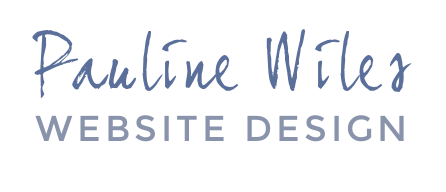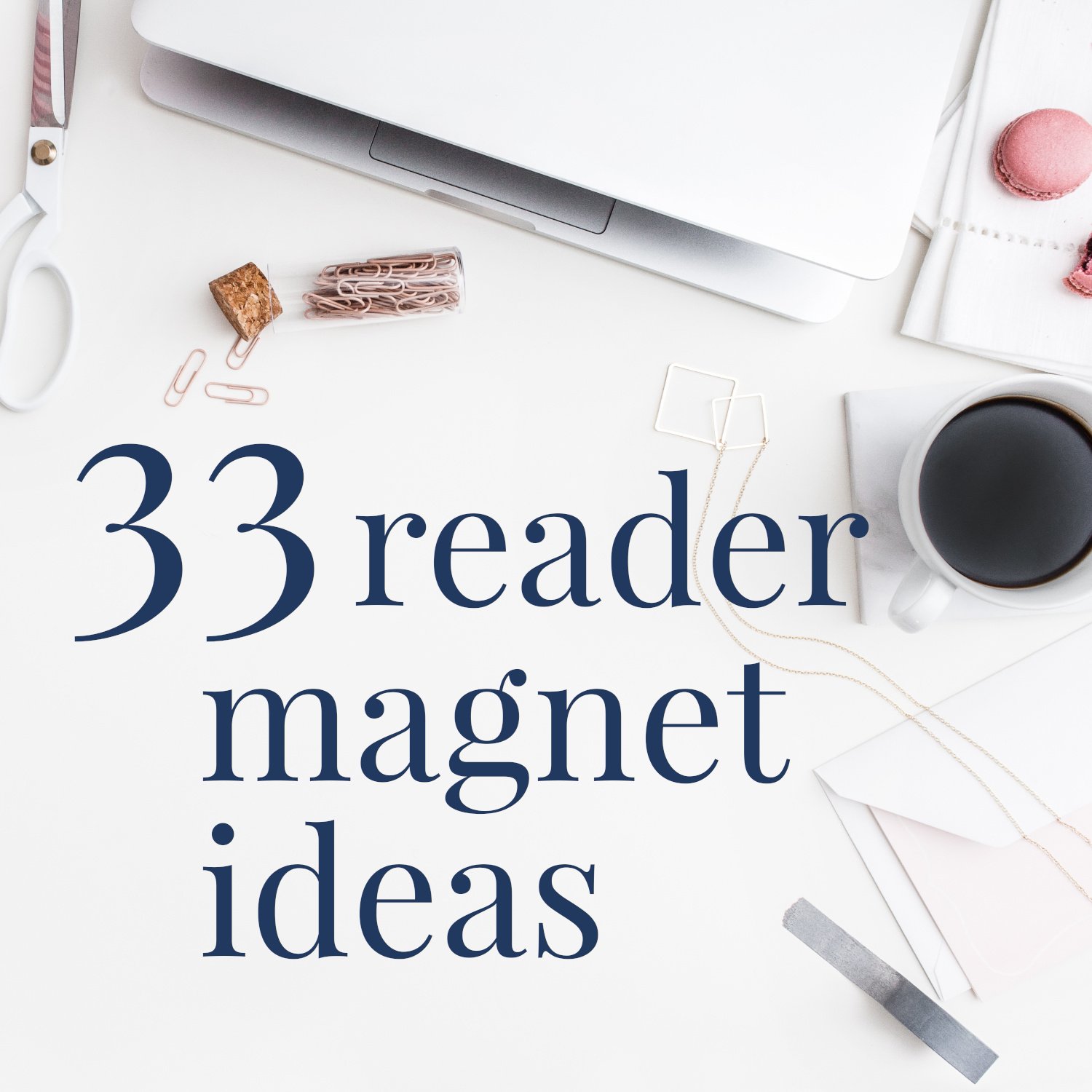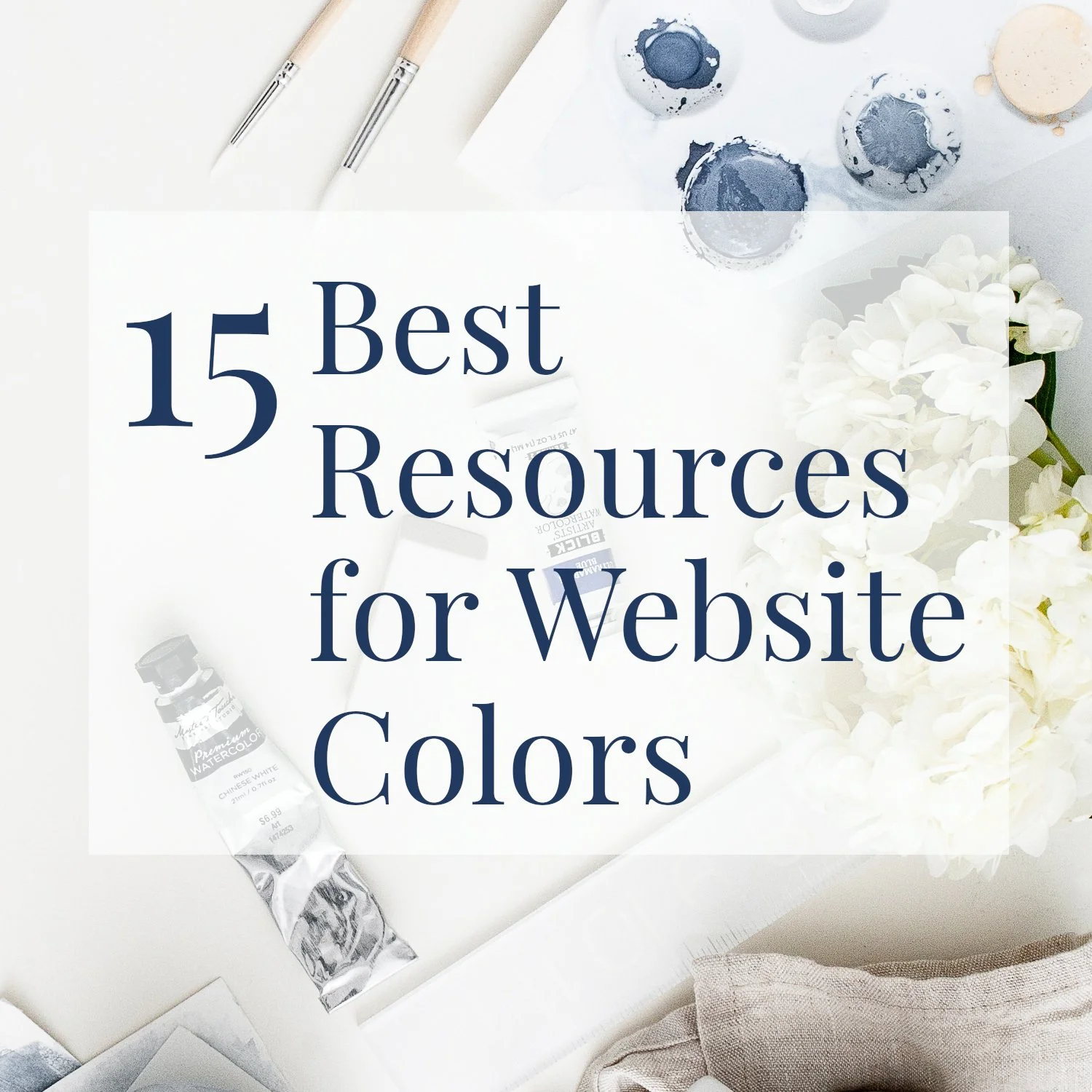33 Reader Magnet Ideas for Authors
• This article contains affiliate links •
Smart authors know that in order to nurture a long term book career, using a reader magnet to grow your email list is an excellent strategy.
Among the reasons you still need an email list, having direct permission to stay in touch with your readers means they can get to know you better, know when you have special events or promotions, and get notified when your next book is coming up for release.
Unlike social media, where fickle algorithms undermine what your audience sees at no notice, you own your email list. Once a reader invites you into their inbox, you can keep sending messages — within reason!
However, a huge marketing mistake that many authors make is thinking that someone will join your email list without a strong reason.
I’ve written before that you should not simply put a sign up form saying “Join My Newsletter” on your website. Unless your readers are fanatical about your work, that won’t be enough.
You need to offer them a reason to trust you with their email address, and give them a taste of the value they’ll get from being on your list. Nobody wants more incoming email for the sake of it! You can dramatically increase the chances that a website visitor will join your list by offering a lead magnet, also known in author circles as a reader magnet.
And this is where many authors feel anxious. What will you offer as your lead magnet?
Don’t worry. I’m here to assure you that if you have the imagination to write a book, you certainly have the imagination to come up with a lead magnet that your readers will find tempting.
General principles for an effective reader magnet
It must appeal to your audience. Don’t offer a beginner’s guide to quantum physics, if you write romantic comedy.
It’s okay if it’s quick to consume. Don’t worry if you don’t yet have enough books that you can give one away for free. The people joining your list may not know you well, and in these days of Kindle-stuffing, they might not make it through a whole book. Something shorter is totally fine.
It should be reasonably quick for you to produce. Don’t delay starting an email list just because you don’t have a lead magnet; don’t set aside your epic trilogy to labor for years on a free novella. If you have work that you can brush up and use, that’s great. If not, there are plenty of ideas below for quick but valuable goodies for your readers.
It should probably be delivered automatically. In other words, you shouldn’t be mailing out a paperback to everyone who joins your list. (I do break this guideline with a few suggestions below, which is okay if your list is small and growing slowly.)
Again, unless your list is intentionally small, your reader magnet shouldn’t cost you money, aside from the subscription to your email tool.
It should be available internationally. The bulk of your book sales might come from one country, but your global readers are important too.
Make it look enticing. Even if it’s a digital download, show a mockup image so it looks “real” and appealing.
For these reasons, most lead magnets are digital files that get sent on autopilot by your email tool, or by a service like Book Funnel, as soon as someone joins your list.
Reminder: email list legality
Since we’re talking about author marketing by building your email list, remember:
You must get permission to email people: you can’t just add your friends and acquaintances to your email list.
And you must use an email tool designed for this purpose. Among other reasons, this will allow for easy unsubscribing.
Related:
How to choose your author newsletter platform
Should you put a popup on your author website?
33 lead magnet ideas for authors
This is not an exhaustive list of options for lead magnets, but hopefully there are enough ideas here to spark your creativity to come up with something that your readers will love.
Both fiction and nonfiction:
1. Free book or novella. For fiction, the first in a series or a related novella both work extremely well. For nonfiction, a short book on a related topic is ideal. Free books do, of course, represent more effort for you than other options on this list. And it’s highly unlikely you’d choose to give away your first and only book.
2. Ultimate 20 (or 30 or 50?) books that you recommend for dedicated fans of your genre.
3. Anthology with friends. Here, you’ll get together with other authors with similar audiences to offer a group collection. For fiction, you’ll offer short stories or poems. For nonfiction: essays or articles around a theme.
4. Printable quotes, affirmations, or other nuggets for readers to stick on their fridge, mirror, or bulletin board as a reminder of your work.
5. Desktop wallpaper for a computer.
6. Bookmarks: either printable, or mailed if your audience is small and you can tolerate the expense.
7. Reader giveaway, for example every month or every quarter. “Real” prizes are popular but you might be able to pull this off with a digital or virtual prize, if it’s appealing enough.
8. Invitation to virtual gatherings on Zoom. These could be social chats, book discussions, coworking sessions, office hours with you, and more. Remember you might need to upgrade your Zoom plan, to host groups.
9. The chance to win “Book club in a box”: For example, 10 free ebook copies, and you’ll attend by Zoom for a discussion.
10. An exclusive online community, such as a Facebook group. Note that there needs to be real value inside; people are approaching saturation with many online groups.
11. An additional free ebook or audio book code, for your reader to give to a friend.
12. A discount code to use when they buy your author merchandise.
13. The opportunity to apply to beta read your next book.
14. An invitation to receive an advance copy of your next book.
15. Your suggested music playlist to accompany the book.
Fiction & Memoir:
16. A collection of short stories. Many writers produce stories before, or alongside, their main work. If you have some short pieces that could be dusted off and assembled, this is a great magnet.
17. Visitor’s guide to one or more real-life settings in your book. Your armchair travelers will enjoy this.
18. A map of the fictional or fantasy location(s) of your book. If you can afford an illustrated version (or add simple sketches yourself), readers love these.
19. Recipes from your novel or memoir. Although this lead magnet idea has been somewhat overdone, it could still work.
20. A quiz. Quizzes are fun, popular, and fast. You can either create something personality based (for example, which of these literary heroes are you…) or compile something with a score (for example, how many of the books mentioned within your book have they read?)
21. Director’s cut: share a key scene with your commentary. You might discuss why you wrote it like that, what symbolism, foreshadowing, or hidden meaning it contains, and so on.
22. Deleted scenes, a prequel, or mini sequel to your novel.
23. A key part of your novel told from a different character’s point of view.
24. A how-to guide for getting started with a skill displayed by one of your characters. Your readers might love to learn about making pasta, windsurfing, reading palms, etc.
25. A contest to name a character in your next book, or influence a location or other big plot point.
Nonfiction:
26. Compendium of articles. Within reason, a few of these can also appear as blog posts on your website. Just make sure some of the content is exclusively for your email subscribers.
27. Checklist to clarify steps or key points from your topic.
28. Cheatsheets, templates, swipe files, action planners, or any other expansion of your subject matter to help guide others.
29. Workbook on getting started, often with open-ended journaling or know yourself questions.
30. Mini course, either delivered as an automated email series, or, ideally, with video or audio content. I use MemberVault for material like this, and love it.
31. Favorite products, tools, or resources related to your topic. Consider signing up as an affiliate for things you recommend, and don’t forget to disclose your affiliate status in your email messages and on your website.
32. Quiz or test of the knowledge from your book.
And if you have nothing else to offer:
33. If you simply can’t come up with a reader magnet, or need more time to finish it, you can still offer something your readers want. Instead of just inviting your audience to “join your newsletter”, promise them special offers, news of events, behind the scenes glimpses, notification of new releases, or a combination of these.
Remember that for the best results, you’ll need to let people know your lead magnet is available
You’ll want to share your reader magnet in various places, including your email footer, social media posts, groups, and profile, but remember to strike a balance. A good proportion of your activity should be engaging with others, sprinkled with sharing your own calls to action less frequently.
Nonetheless, as long as you don’t “shout” about your content the whole time, there are many more opportunities to mention your lead magnet than you might realize.
•
Would you like me to design and build your author website?
As a professional specializing in Squarespace websites for authors, I’m an expert in planning and implementing a site that generates results for your book and your business. If you’d like strategic expertise, book marketing advice, top quality design, and all of the implementation taken care of, consider hiring me.
After careful preparation together, I’ll design, build and launch your site in usually just 2 weeks. Learn more, and then schedule our free and friendly conversation.









